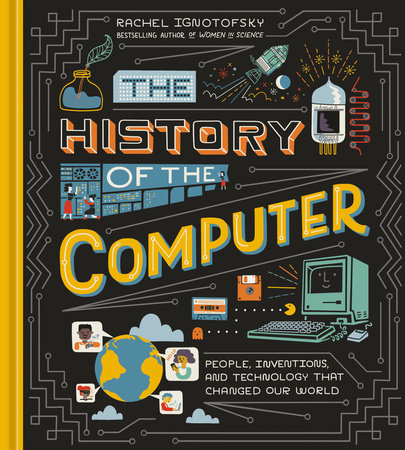The History of the Computer
People, Inventions, and Technology that Changed Our World
Rachel Ignotofsky
About the Book
“A beautifully illustrated journey through the history of computing, from the Antikythera mechanism to the iPhone and beyond—I loved it.”—Eben Upton, Founder and CEO of Raspberry Pi
ONE OF THE BEST BOOKS OF THE YEAR: The New York Public Library
Computers are everywhere and have impacted our lives in so many ways. But who created them, and why? How have they transformed the way that we interact with our surroundings and each other?
Packed with accessible information, fun facts, and discussion starters, this charming and art-filled book takes you from the ancient world to the modern day, focusing on important inventions, from the earliest known counting systems to the sophisticated algorithms behind AI. The History of the Computer also profiles a diverse range of key players and creators—from An Wang and Margaret Hamilton to Steve Jobs and Sir Tim Berners-Lee—and illuminates their goals, their intentions, and the impact of their inventions on our everyday lives.
This entertaining and educational journey will help you understand our most important machines and how we can use them to enhance the way we live. You’ll never look at your phone the same way again!




